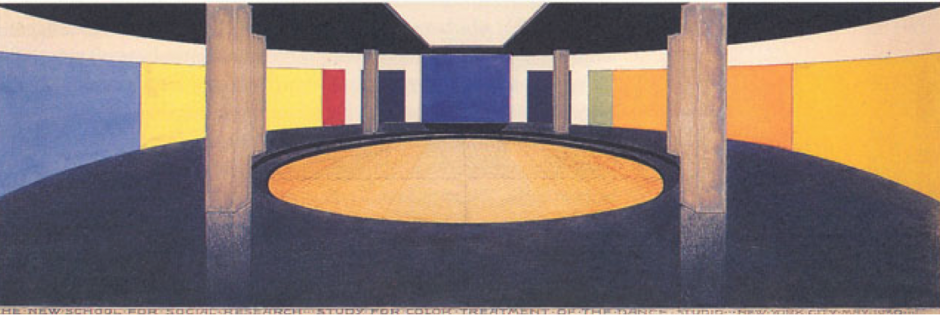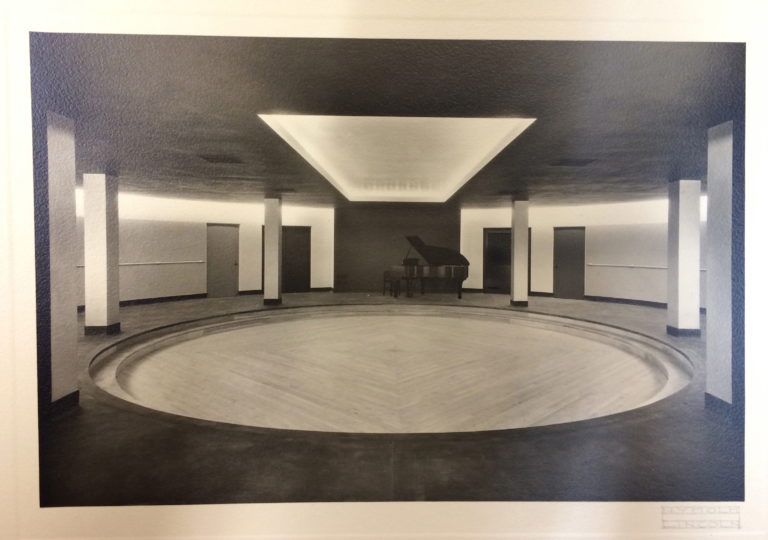by Dora Sapunar, M.A. Design Studies/Parsons ’15
The ceiling is painted black, excepting the reflecting area in the center and around the walls which are white. To the level of the tops of the doors, the walls are painted in colors, one section being orange and the next yellow with blue next to that and so on. The floor is dark blue. The entrance doors are light green and one of the two doors opposite the entrance is vermilion and the other is light emerald green. (Cole, p.25)
The New School’s Dance Studio remains one of the most compelling spaces of the 66 West 12th Street building, although, unfortunately, its original color scheme has not been preserved. In the Dance Studio, a circular room in the basement, centered around a sunken waxed maple floor and framed by four pillars, Urban used color in a highly innovative way. To make up for the low ceilings in the basement room, as well as to convey a sense of drama inherent to dance, Urban planned a highly intricate and powerful color scheme. Joseph Urban’s original color drawings for the Martha Graham Dance Studio are at Columbia University’s Rare Book and Manuscript Library. Although it is difficult to say to what degree the final colors corresponded to Urban’s original color schemes, it is indisputable that the space represented the energy of dance. Joseph Urban’s design of this space was powerfully influenced by his second wife, Mary Porter Beegle, who had once danced in Isadora Duncan’s company, and who later taught dance at Barnard College and worked in public relations at the New School in the 1940s, after her husband’s death.

A particularly interesting large rendering of the dance studio from the Columbia Archives, reveals the dynamic nature of Urban’s design. The ceiling was painted black, save for a central strip, which was a dull white. Another narrow band of white paint divided the ceiling from the bright intensity of the wall schemes. The wall was then divided into sections, each painted a different section, flat planes of blue, orange, yellow and red. It was highly unusual and forward-thinking of Urban to articulate a space primarily through the use of color. Although in other rooms of the school color was used to give additional accents to space, in the Dance Studio, color was an integral part of the architecture of the space. It was used to both unify and decorate the room, drawing people in to the center of the room, spurring them on to join the dancers on the dance floor and depending on the vantage point of the viewer dynamically changing the backdrop behind each dance move. While black and white photographs of the Dance Studio reveal a space reduced to its basic components, a work of modernist restraint, it is important to keep in mind the sheer liveliness of its original plan.

Image
Dance Studio, Joseph Urban Papers, Rare Book & Manuscript Library, Columbia University.